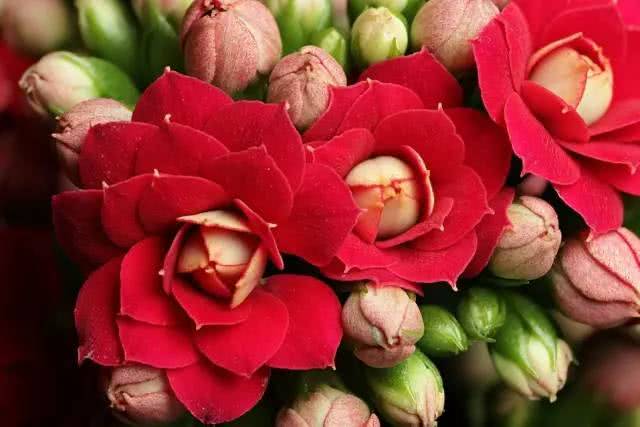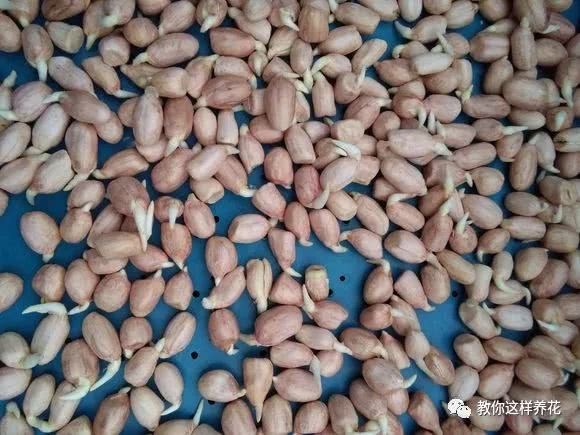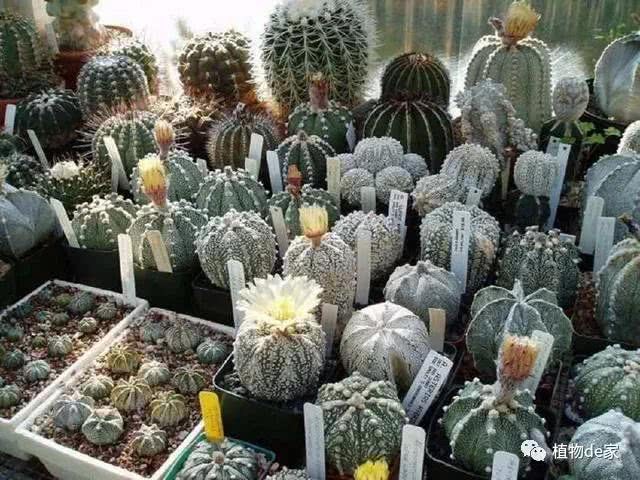If these six kinds of flowers are withered, prune and fertilize quickly before they can blossom year after year.

The flowers are good-looking, but they should be pruned in time after thanks, otherwise they will consume plant nutrients. They will be overjoyed when looking at the flowers. You should take good care of them after giving thanks to them. You can't ignore them.
"
Post-anthesis treatment. "
Longevity flower
Longevity flower is a succulent plant of the family crassulaceae. Because of its auspicious name, bright color, wide variety, rich color and easy management, if planted properly, the flowering period can be as long as two to three months, which is loved by flower friends. After the longevity flowers fade, the residual flowers should be cut off in time to save nutrients for the next flowering.
After the flowers bloom and fail, the residual flowers not only affect beauty, but also consume nutrients, so it is best to remove them in time.
Generally cut off the second pair of leaves and branches under the flower branches to promote longevity flower branches, but also to maintain a good plant type, but also to promote better flowering next time. The pruned flower stem can be used for cutting. Keep the flowerpot in a cool place, reduce watering, and you can maintain it normally after a month.
Spring flower Xie can change the pot, do not need to change the soil, retain the original soil, choose a little larger than the original flowerpot, add an appropriate amount of organic fertilizer at the bottom, and add some soil to the pot to provide new nutrients for the second flowering.
Longevity flowers consume a large part of their nutrients when they bloom, and they are generally not fertilized during flowering. It is necessary to replenish fertilizer in time after flowering, and liquid fertilizer based on nitrogen can be applied once to promote its rejuvenation. Apply nitrogen, phosphorus and potassium compound fertilizer or organic fertilizer for the rest of the time.
Chinese rose
The heat of summer makes many plants semi-dormant. Rose experienced a summer of suffocation, to the autumn began to press can not bear, to grow and blossom. So at this time, to provide a good growth environment for rose, pruning some of the branches that waste nutrition, can promote flowering.
Cut off all the weak branches, dead branches, diseased branches and clump branches. If you have already pruned once in summer, there is no need for repeated pruning.
Normal branches generally do not prune the main branches, the lateral branches generally leave 3 bud points, the secondary branches on the lateral branches leave 2 bud points, and the rest of the branches need to be cut off.
The residual flowers of rose lose a lot of nutrients and affect the formation of new flower buds. Timely removal of residual flowers and flower stalks can promote plants to form flower buds earlier and promote plants to blossom more and more beautiful flowers in the next round more quickly.
Take micro-moon lavender as an example:
Cut off about one centimeter above the second or third pair of leaves under the flower.
You can trim it a little harder in winter.
What it looks like after trimming
(Sina blog Merson)
Fertilizer cannot be applied during flowering, and flowering consumes a lot of nutrients, so fertilizers should be replenished in time after flowering to promote flower bud differentiation. Compound fertilizer can be used after flowering, farm manure can be applied after flowering if possible, and if not, we can also buy commonly used slow-release fertilizer and liquid fertilizer. If you don't replenish the fertilizer in time, the rose will grow worse and worse.
Phalaenopsis
After the butterfly orchid is withered, if you want to bloom for the second time in the same year, cut the flower stem from 4 to 5 nodes at the base. the advantage of this cutting is that it can blossom again after 2-3 months. However, the nutrient consumption of the plant is too high, which is not conducive to the growth of the coming year.
If you want to recuperate in that year and blossom again next year, it is best to cut the flower stem from the base.
In addition, it should be noted that when the Phalaenopsis matrix is aging, it should be replaced in time, otherwise the air permeability becomes worse, which will cause root rot, weaken plant growth and even die.
Phalaenopsis should be fertilized all year round and should not be stopped unless the low temperature lasts for a long time. Winter is the flower bud differentiation period of Phalaenopsis, and the cessation of fertilizer can easily lead to no flowers or few flowers.
During the growing period, thin liquid fertilizer can be applied every 7 to 10 days, organic fertilizer should be used, and special nutrient solution for Phalaenopsis can also be used, but do not apply when there are buds, otherwise it is easy to drop buds early.
Long leaves in summer (that is, after flowering), nitrogen and potash fertilizer can be applied. Phosphate fertilizer can be used in autumn and winter flower stem growth period, but it should be thin, about every 2 to 3 weeks. The time of fertilization is after watering in the afternoon, and after several times of fertilization, orchid pots and orchid plants should be washed with a lot of water to avoid residual inorganic salts harming the roots.
Jasmine flower
Post-flowering pruning of jasmine is very important. under normal circumstances, flowering new branches are generally longer, with more than 5 nodes, and the upper part is thin. if there is no pruning or light pruning after flowering, the plant type will be too high and thin, and the new branches will become thinner and thinner, so moderate pruning should be carried out in time after flowering.
For the more robust flowering branches, leave 1-2 nodes to cut off; if the very weak branches are not retained, the lower first-class new branches (that is, the mother branch of this flowering branch) will reproduce new branches; do not keep the thin and weak branches in the inner chamber, because it is very difficult to send out robust branches and affect ventilation and light transmission to cause diseases and insect pests.
After pruning, put it in a sunny place for maintenance, watering the right amount, do not rush to fertilize, and then apply thin fertilizer frequently after flower bud germination. Jasmine flowers like acidic soil and can be diluted with fermented bean cake or ferrous sulfate solution. 7 days after pruning, you can spray potassium dihydrogen phosphate solution to the leaves, which can promote germination and speed up the second flowering!
Gardenia
After the gardenia flower has withered, just cut off 2-3 pairs of leaves from below the flower.
Like jasmine, gardenia likes acidic soil, consumes a lot of nutrients during flowering, and fertilizes in time after flowering. Can use self-made cake fertilizer, or configure ferrous sulfate solution, diluted fertilizer, once a month can be applied.
Petunia
Petunia had better prune the flower branches in time after flowering, and supplement fertilizer, so that petunia can continue to blossom, otherwise it will become more and more sparse. Petunia's flowers are almost gone, and there are more residual flowers.
Prune all the flowering branches
After pruning, add some phosphate and potassium fertilizer, maintain under normal light, and burst the basin again a week later. Fat and water and timely pruning are the key.
(petunia bar qdumi)
Why are you still in bloom now?
How do you trim your flowers after they fade?
Let's talk to everyone in the message area below.
Let's show it to the flower friends in need.
- Prev

Ten peanuts in the water will grow into a pot plant that looks better than a hanging orchid. There will be a surprise two months later.
Many flower lovers buy flowers and potted plants. in fact, there are a lot of small green potted plants around them. if they are cultivated well, they will be able to reap a bumper harvest after a few months. The taro sprouted in the flower friend's house. Put it in the flowerpot and add some water.
- Next

How to maintain the fairy ball pocket? The strategies are all here.
In fact, this is also a more solid succulent is not very difficult to raise! So their maintenance is also relatively simple! Thanks to netizens: the origin of Uncle Wolf's material pocket is in eastern Mexico, and it is very hot and rainy in the rainy season! But...
Related
- Wuhan Hospital Iron Tree Blooming Result Was Instantly Frightened by the Gardener Master
- Which variety of camellia is the most fragrant and best? Which one do you like best?
- What is the small blue coat, the breeding methods and matters needing attention of the succulent plant
- Dormancy time and maintenance management of succulent plants during dormancy
- Minas succulent how to raise, Minas succulent plant pictures
- What are the varieties of winter succulent plants
- How to raise succulent plants in twelve rolls? let's take a look at some experience of breeding twelve rolls.
- Attention should be paid to water control for succulent plants during dormant period (winter and summer)
- Watering experience of twelve rolls of succulent plants
- Techniques for fertilizing succulent plants. An article will let you know how to fertilize succulent plants.

